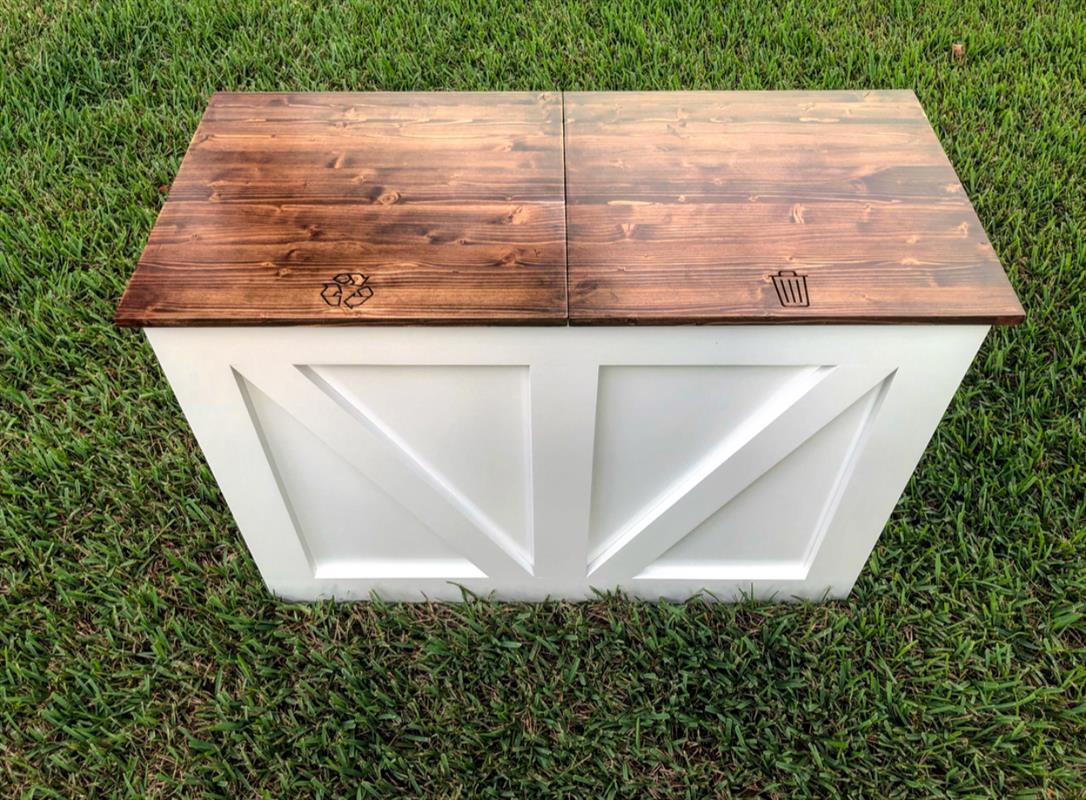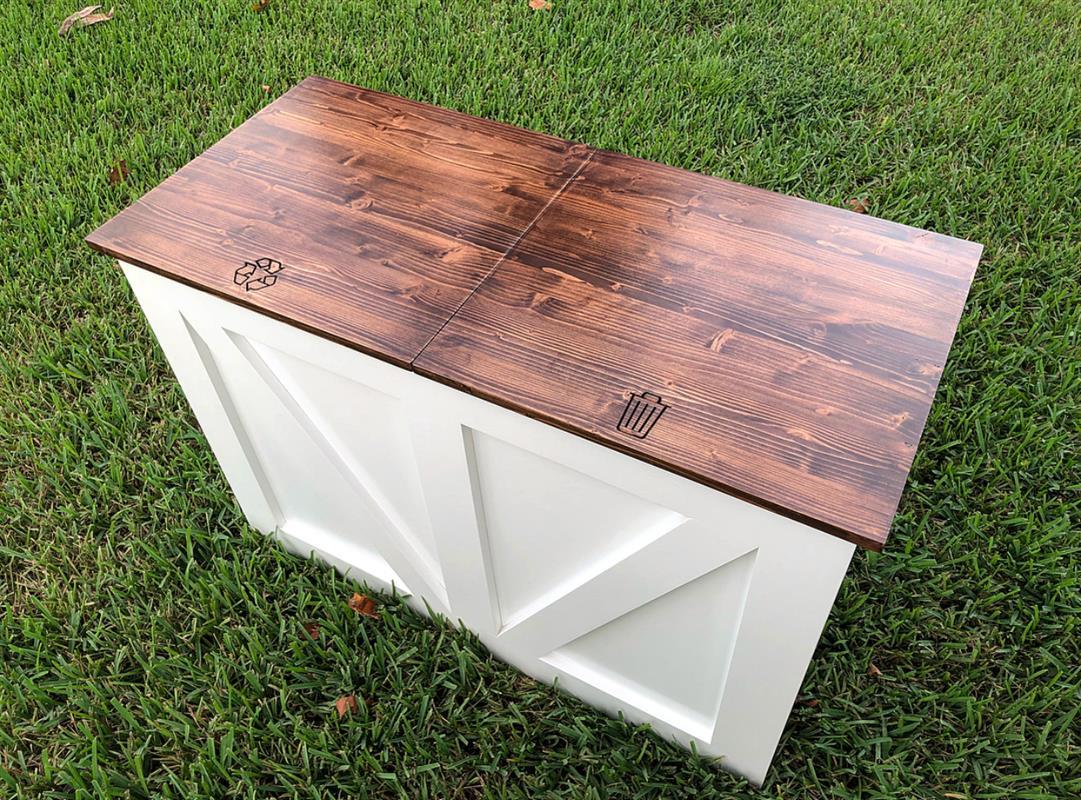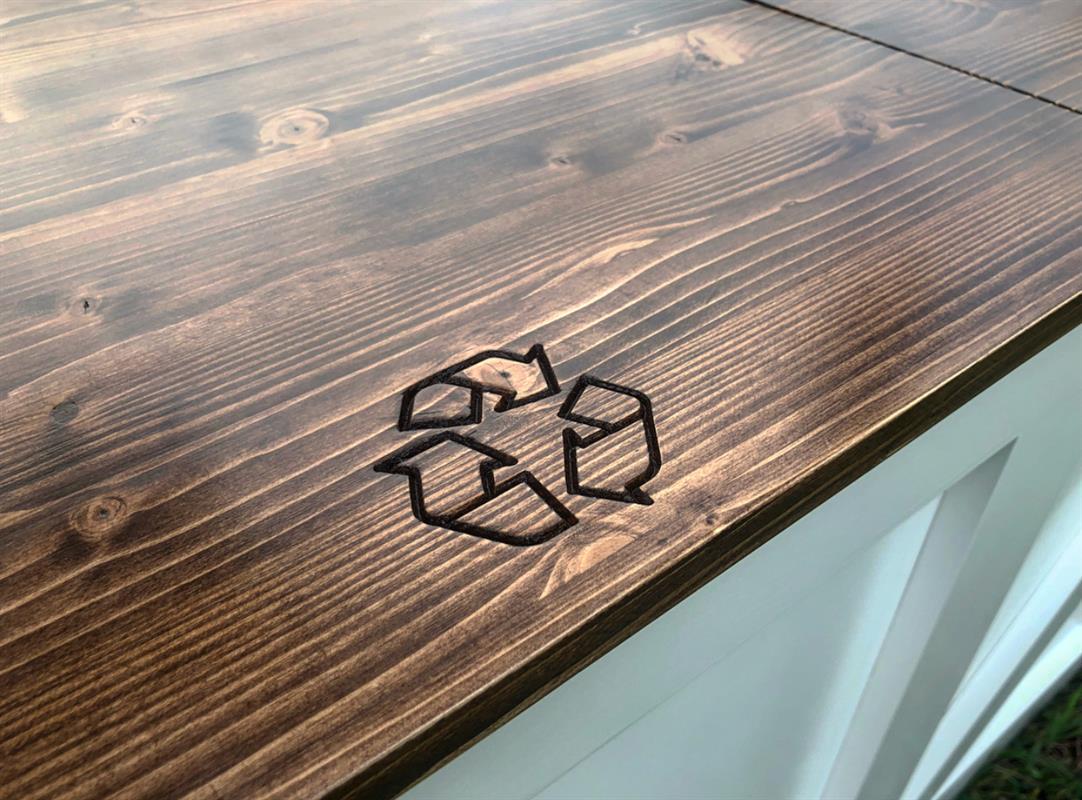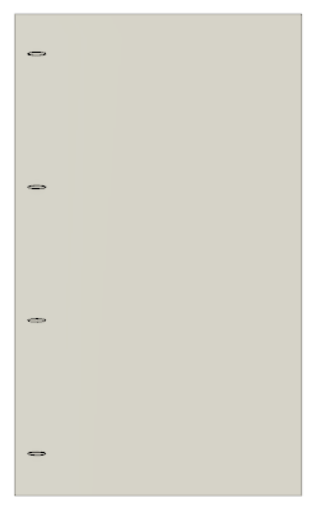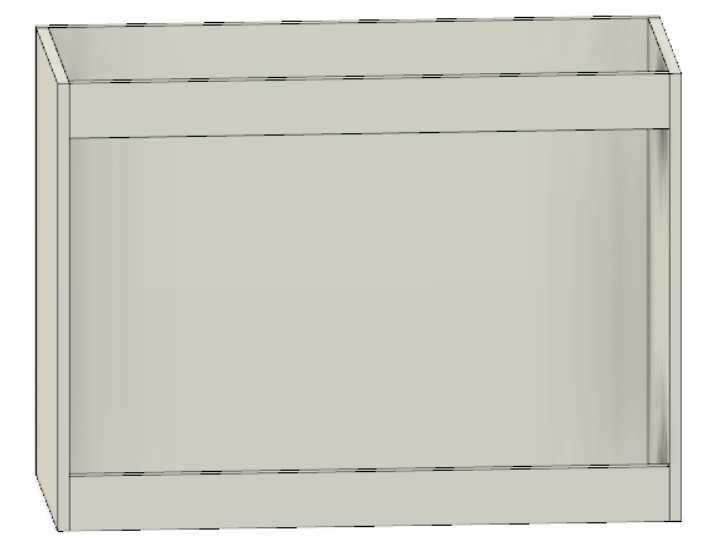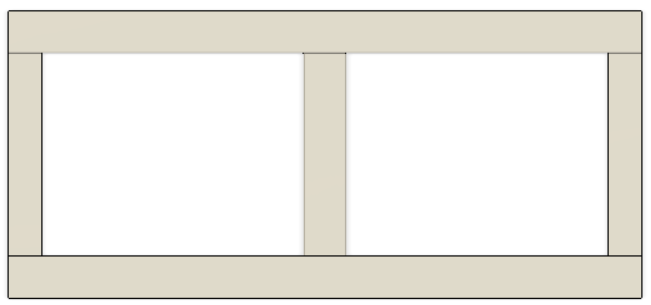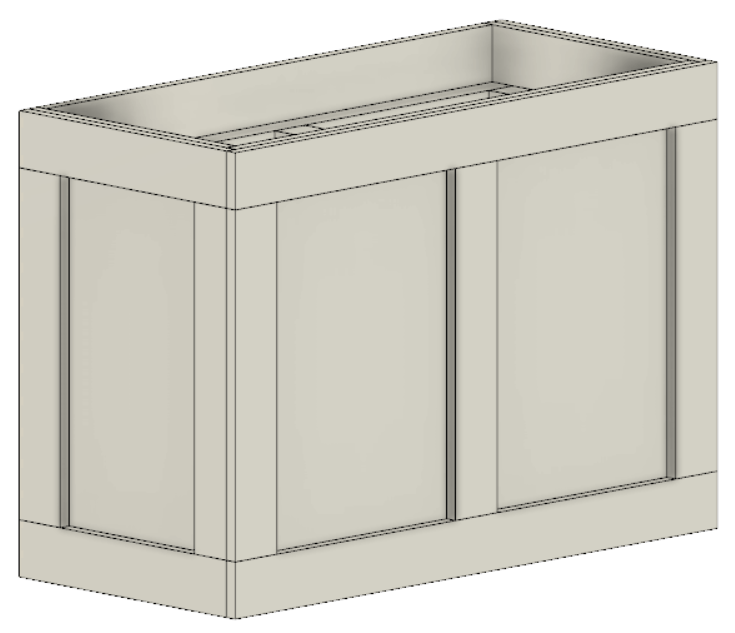Trash and Recycling Cabinet
By South Tampa WoodworksThis is a Easy/Moderate DIY plan for a double bin trash and recycling cabinet. Made from 100% dimensional lumber you can purchase at the local home center. Please note, this project is designed based around the Sterilite 13.2 Gallon Trash can, if your cans are different, some tweaks may be needed.
Directions
-
Breakdown 3/4" Plywood
You can use a table saw, circular saw, track saw, or even have the home center cut the sheet for you on their panel saw.
Follow cut list for dimensions.
1. Front Panel
2. Side Panels
3. Back Strips
4. Can Frame Front and Back
5. Can Frame Sides and Middle strips -
Drill Kreg Pocket Holes Side Panels
Drill pocket holes using Kreg Pocket hole jig on the front edge of each side panel.
We used the Kreg Foreman for this, but you any Kreg Pockethole jig will work.
-
Attach Side Panels to Front Panel
Using 1.25" Kreg Pocket Hole Screws and and a cordless drill, attach the side panels to the front panel using the pocket holes we drilled in step 2.
Tip: The Kreg 90 degree corner clamp is a great helping hand to hold the panel square as you drive in the screws.
-
Attach the Rear Cabinet Supports
Using the pocket holes we drilled in step 2, attach the Rear Cabinet Supports to complete your base cabinet. You could enclose the back with a full plywood panel, but since this cabinet is to store trash, we like the back open for easy cleaning.
-
Assemble your inner can frame
Assemble the inner can frame using 1.25" Kreg Pocket hole screws and a cordless drill.
Tip: A Kreg Face clamp will help keep your joints flush as you drive in the screws.
This step is really optional. The can frame is built to specifically hold the Sterilite 13.2 gallon wastebasket. Part number 10888004.
-
Drill Kreg Pocket Holes Back Strips
Drill Pocket Holes on the ends of each rear cabinet support strip, and along the bottom edge
-
Attach Inner Can Frame
Line your panel up under the rear cabinet support strip and square to the front of the cabinet. Using the pocket holes along the length of the front of the frame, secure the frame with 1.25" Kreg Pocket Hole Screws.
-
Drill Kreg Pocket Holes Can Frame
Drill Kreg Pocket Holes on the ends of the 3 small strips for the can frame and on the outside edge of each strip to attach to the cabinet
-
Attach Bottom Face Frame
Attach the 3 pieces flush with the bottom of the cabinet using glue and a brad or pin nailer. If you don't have a nail gun, you can use a hammer and nails, or secure with 1.25" screws from inside the cabinet.
-
Attach Vertical Face Frames
Attach the vertical face frame components in the same manner. Attach the side vertical pieces, and then the front. The side components on the front edge are just 2.75" thick so when the front face frame butts up to them, you get a uniform 3.5" faceframe look.
-
Breakdown Face Frame Pieces
Follow the Cut List to make all of the face frame parts.
*Note: Rip 2 of the vertical strips down to remove the thickness of your face frame stock, this allows the corner of the cabinet to look uniform and have the same size pieces.
List:
4 side horizontals
2 front horizontals
5 verticals
2 side front verticals -
Attach Top Face Frame
Attach the side horizontal face frames, once again attaching the side pieces first and then the front.
-
Cut Diagonal Face Frame Pieces
This is by far the most challenging step of the build. It is important that you complete the rest of the face frame first, as this is a cut to fit measurement. When measuring these diagonal pieces, we like to hold a board up corner to corner and mark a line. Then using a speed square we can measure the angle to set up our miter saw. Cut one side and hold it up to see if it looks like it will line up in both corners. If it looks good, mark a line and cut the other end at the same angle (parallel to the first cut).
-
Attach Diagonal Face Frames
Attach your diagonal frames using glue and brad nails. Don't worry, if they aren't a perfect fit, you can add some wood putty to cover imperfections.
-
Cut Pine Project Panel for Lids
Rip your pine project panel down to your final depth of 19.25. Then cross cut to length of 42". Then cross cut it straight down the middle to separate the panel into two lids.
-
Drill Holes for Concealed Hinges
Using the Kreg Concealed Hinge Jig, drill two holes 5mm from the edge and 4" from each corner along the back edge of your lids. The Kreg Concealed Hinge Jig will also allow you to pre-drill for the hinge screws using a 1/16" bit.
-
Attach Concealed Hinges to Lids
Using two 3/4" Countersink screws, attach your concealed hinge in the recessed hole.
-
Attach Face Frame Hinge Mounts
Face Frame hinge clips make it easy to install the concealed hinges. For this we just set the door in place and traced where the clips would land with a pencil. Pre-drill your holes and then attach with 3/4" countersink screws.
-
Attach Soft Close Mechanisms
We used the soft close mechanism that clips on to the concealed hinges, but it wasn't quite strong enough on it's own, so we also added the stand alone soft close kit. Part numbers listed in Hardware.
-
Sand and Finish Your Cabinet!
A little wood filler on the seams, a little sanding here and there and you are ready for finish. We chose to paint the cabinet and stain the lids. I plan on keeping this cabinet for a long time, so I chose the following.
Cabinet:
2 Coats of Bin Primer, sand with 240 grit between coats.
2 Coats of Sherwin Williams Emerald Trim Urethane Semi-Gloss
1 Coat of General Finishes Enduro Clear PolyLids:
Varathane Dark Walnut Stain
2 Coats of General Finishes Enduro Clear Poly




